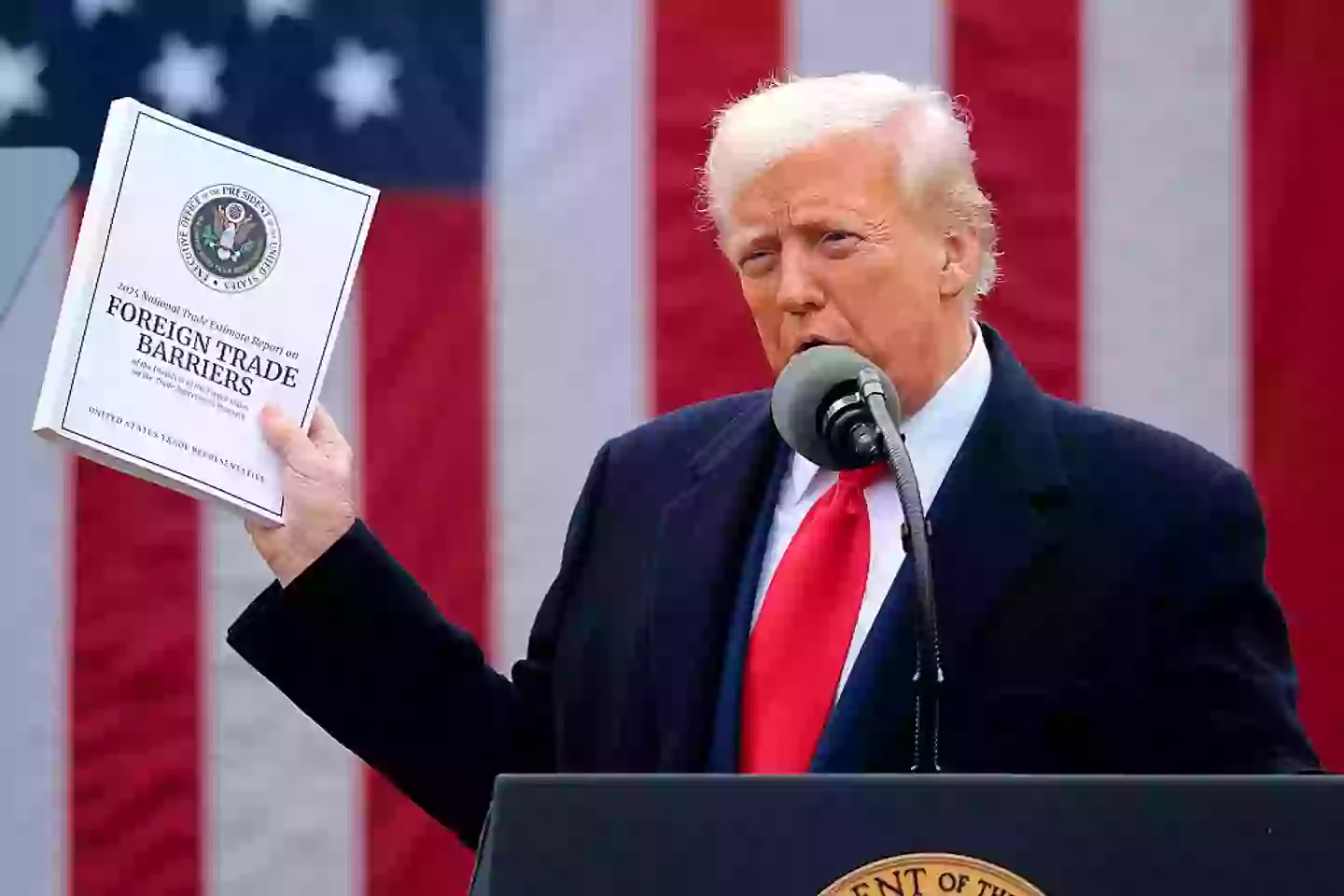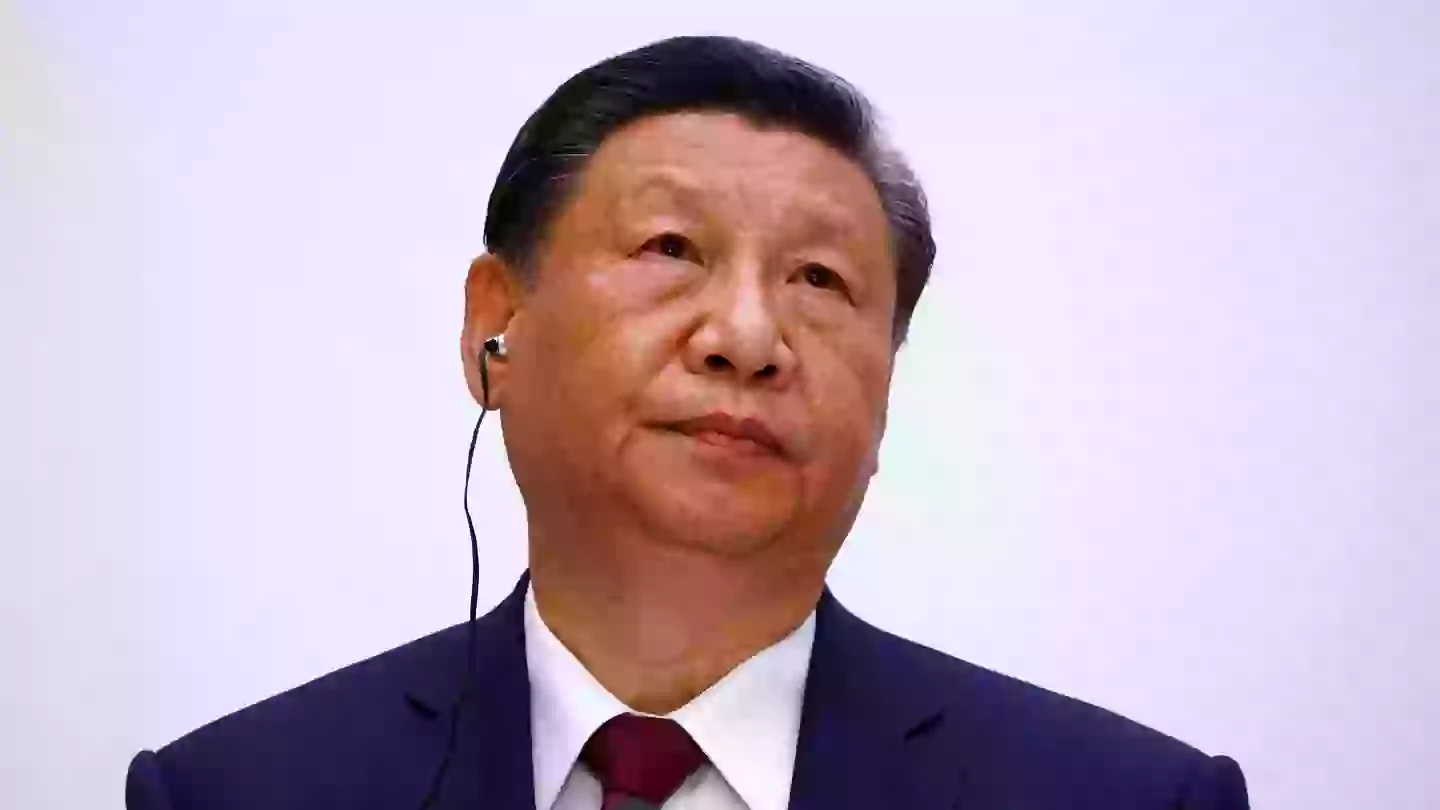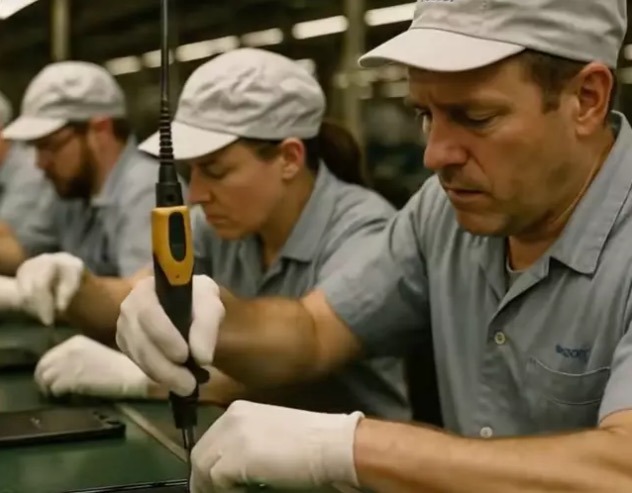In response to former President Donald Trump’s recent tariff proposals, a viral video has emerged that portrays a satirical and dystopian vision of the future of the U.S. economy. This AI-generated clip, which has garnered over 600,000 views on TikTok, offers a critical commentary on the potential consequences of Trump’s trade policies—particularly his decision to impose tariffs on goods from countries like China.
The video, which some are calling a “satirical mockery”, paints a picture of Americans working in factory conditions as the U.S. attempts to restore manufacturing jobs. The clip is one of many responses to Trump’s announcement in early April that he intends to implement tariffs as high as 104% on imported goods, which he claims will revitalize the U.S. economy by encouraging local production and reducing dependence on foreign manufacturers.
The Background: Trump’s Tariffs and “Liberation Day”
On April 2, 2025, Trump revealed a new economic plan that aims to increase tariffs on imported products, particularly from China. The former president framed the tariffs as a way to achieve “economic liberation” for the United States, calling it “Liberation Day”—a day when American workers would finally benefit from policies that prioritize U.S. industries.
Trump’s proposal has sparked significant debate and criticism, particularly from economists and trade experts who warn that such tariffs could have negative repercussions for U.S. consumers and businesses. According to reports from Reuters, experts suggest that increased tariffs could lead to higher prices for goods, potentially hurting lower-income families, while also risking job losses in sectors that depend on affordable imports.
“This will likely raise consumer prices and could result in further outsourcing of American jobs to countries where labor costs are lower,” said Alicia Robinson, a senior economist at the Institute for International Economics.
While Trump’s tariffs are intended to benefit U.S. manufacturers, critics argue that the impact could be harmful for consumers, who might end up paying more for goods, from clothing to electronics, which are traditionally sourced from countries like China and Mexico.

The Viral Video: A Satirical Take on Trump’s “Reindustrialization” Plan
The video in question, posted by TikTok user @axiang67, has sparked widespread attention and is being shared across various platforms. Created with the help of artificial intelligence, the video humorously portrays a dark vision of America’s future under Trump’s proposed tariffs. The scene depicts overweight, uninspired Americans working in a dingy factory, assembling products like smartphones and clothing with a deadpan demeanor. The video ends with a twisted interpretation of Trump’s famous slogan, “Make America Great Again,” hinting at a regressive, labor-intensive future that many viewers found both unsettling and ironic.
While the video’s tone is exaggerated, it plays on concerns that such a protectionist trade policy could lead to a shrinking of the middle class and the resurgence of factory work under conditions similar to those of the industrial revolution.
The use of AI-generated animation also underscores the satirical nature of the video, which mocks the idea of a return to mass manufacturing in the U.S. as a solution to economic inequality. According to The New York Times, AI-based content has become increasingly popular for political satire, allowing creators to quickly produce viral content with a powerful social media impact.

Public Reactions: Divided Opinions and Debates
The video has not only garnered attention but also sparked significant debate on social media. Some viewers found the portrayal of a factory-bound America humorous, while others felt it was an overblown depiction of reality. As the video continued to gain views, commenters expressed varied opinions about the potential effects of Trump’s tariffs.
Some supporters of Trump’s policies saw the video as an unrealistic exaggeration, arguing that increasing manufacturing jobs in the U.S. could benefit the economy by creating more domestic employment opportunities and reducing reliance on foreign imports. Others voiced concerns that the video, despite its humor, may be closer to the truth than they were comfortable admitting.
One TikTok user commented:
“I get the point, but it’s not all bad to have American jobs back. The real question is: what cost will it have on consumer prices?”
However, many critics of Trump’s tariff proposals were less than impressed with the video’s portrayal. Some took to Reddit and Twitter to highlight the potential downsides of his policies, which they argue could disproportionately hurt everyday Americans:
“It’s just not practical. This isn’t what’s going to happen,” wrote one Reddit user, commenting on the video.
Others, including economists and market analysts, argue that protective tariffs could harm the broader economy by raising costs for consumers while hurting businesses that rely on affordable imports for raw materials and finished products.

The Impact of Trump’s Tariff Proposals on U.S. Manufacturing
Despite the viral backlash from the video, U.S. manufacturing is not in total decline. According to the National Association of Manufacturers, the U.S. is still the second-largest manufacturer in the world, producing a wide range of products from aircraft to semiconductors. While outsourcing has led to lower production costs in some industries, U.S. manufacturers are still competitive in sectors requiring advanced technology and skilled labor.
Nonetheless, experts have raised concerns about the broader economic effects of Trump’s tariff strategy. According to a 2024 report by the Peterson Institute for International Economics, tariffs could raise the price of goods in the U.S., which would negatively impact consumers, especially those in lower income brackets.
“Tariffs are a tax on consumers,” said Catherine Mann, Chief Economist at the Institute. “They raise the cost of goods and could slow down economic growth in the U.S.”
In light of these concerns, many wonder whether the benefits of increased domestic production will outweigh the higher consumer prices that might result from such policies.

The Global Response: China’s Retaliation and the Future of U.S.-China Trade Relations
In response to Trump’s proposed tariffs, China has already announced plans to implement retaliatory measures, further complicating the situation. According to Bloomberg, China has vowed to impose counter-tariffs on U.S. goods, which could escalate tensions between the two global economic powers and deepen the ongoing trade war.
The economic repercussions of this trade standoff remain to be seen, but some experts warn that prolonged tariff battles could lead to a global slowdown, affecting both U.S. businesses and consumers.

Conclusion: The Future of Tariffs and the Global Economy
As the debate over Trump’s tariff proposals continues, it’s clear that the consequences of protectionist trade policies extend beyond the viral content on social media. Whether or not his vision of reindustrializing the U.S. will lead to the revitalization of American manufacturing, only time will tell.
In the meantime, the viral AI-generated video mocking Trump’s tariffs serves as a reminder of the economic complexities involved in trade policy. As consumers, businesses, and policymakers weigh the pros and cons of tariffs, it’s essential to consider both the short-term and long-term effects of these decisions on the global economy.
For now, the global audience remains divided on whether the future of U.S. manufacturing will be marked by resilient growth or an economic retreat.
Sources:
- National Association of Manufacturers – Manufacturing in America
- Peterson Institute for International Economics – Impact of Tariffs on Consumers
- Bloomberg – China Trade Retaliation
